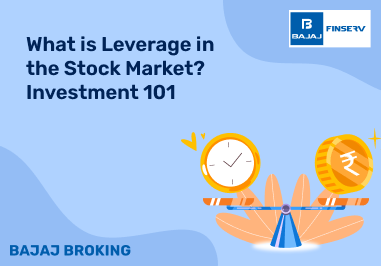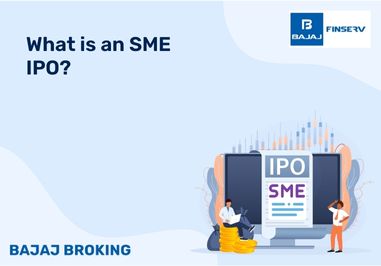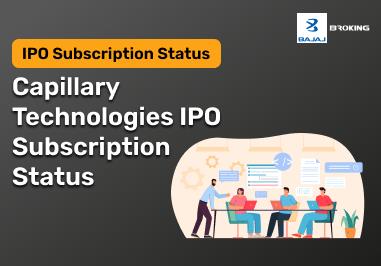Algorithmic trading, commonly known as algo trading, involves using pre-programmed instructions or algorithms to execute trades automatically. These strategies are based on timing, price, volume, and other market-related factors. While algo trading offers speed and efficiency, it also comes with inherent risks. Therefore, having a robust risk management framework is crucial to protect your capital.
In this guide, we’ll walk you through everything you need to know about algo trading risk management — from identifying risks to implementing strategies to safeguard your investments. If you're looking to open a Demat account or already trading using algorithms, this article will help you make smarter, safer trading decisions.
Understanding Risks in Algo Trading
Before you can manage risk, you need to understand what kinds of risks are involved in algorithmic trading. Unlike manual trading, where human judgment can intervene in real-time, algorithmic systems rely solely on programmed rules. This creates both opportunities and vulnerabilities.
Even the most well-designed algorithms can encounter market conditions they weren’t prepared for. A small programming flaw or incorrect market assumption can lead to significant losses within seconds.
Key points to understand about risks in algo trading:
Algorithms execute orders automatically, sometimes faster than a trader can react.
Markets are dynamic. Strategies that work today might fail tomorrow.
System failures or connectivity issues can impact trade execution.
This is why algorithmic trading risk management is not optional — it’s essential.
Common Risks Associated with Algorithmic Trading
While there are multiple types of risks involved in algo trading, beginners should be especially aware of the most common ones. Let’s explore each of these risks in detail, with practical examples for better understanding.
1. Technical Failures
If the trading system crashes or there’s an internet failure, the algorithm might not function properly. This could lead to missed trade opportunities or trades being executed at incorrect prices.
Example:
If a stop-loss order fails to trigger due to a server crash, the position may suffer a much larger loss than intended.
2. Over-Optimization
Also known as “curve fitting,” this happens when a strategy is too finely tuned to historical data. It performs well in backtests but fails in live markets.
Example:
A trading bot that works perfectly on past data might fail in real-time due to unexpected market volatility.
3. Market Risk
This includes the general risk of market movement against your position. Although this is common in all forms of trading, algo strategies can amplify losses due to high-frequency trades.
Example:
If an algorithm continues buying during a rapid market crash, it may lead to huge cumulative losses.
4. Liquidity Risk
Sometimes, the assets your algorithm wants to trade don’t have enough buyers or sellers. This can lead to poor execution or slippage.
Example:
Your system places a large buy order in an illiquid stock, but there's no one to sell. It ends up filling at a much higher price.
5. Execution Risk
This occurs when there’s a delay or issue in executing the trade at the intended price. It might be due to latency, poor connectivity, or broker inefficiencies.
6. Regulatory Risk
Regulations around algo trading differ by region. A lack of understanding or non-compliance can result in legal penalties or blocked accounts.
7. Model Risk
The trading logic might have flaws or make incorrect assumptions about market behaviour. A poorly constructed algorithm may generate wrong signals.
Strategies for Effective Risk Management
Algorithmic trading brings exciting opportunities, but it also demands caution. Managing your risks isn’t just a one-time step — it’s an ongoing process. Below are several essential strategies every algo trader should follow to protect their capital and build a sustainable trading system. Each of these methods can reduce the chances of a loss in your algorithmic trading journey.
1. Backtesting with Realistic Parameters
Backtesting refers to testing your trading algorithm on past market data to see how it would have performed. While it sounds simple, the key is to ensure your backtest is realistic.
Many new traders fall into the trap of overfitting — creating a strategy that performs perfectly on historical data but fails miserably in real-time. That’s because they unknowingly tailor the strategy to past patterns that may never repeat.
To manage this risk effectively:
Use historical data across different market conditions (bullish, bearish, sideways).
Factor in realistic assumptions like slippage, transaction fees, and order execution delays.
Avoid tweaking the algorithm excessively just to improve backtest results. Focus on robustness, not perfection.
Tip:
A slightly less profitable but consistent strategy is safer than one that looks perfect on paper but is fragile in real markets.
2. Use Position Sizing and Capital Allocation
This strategy helps control how much of your capital is used in each trade. Instead of placing large bets, smart traders allocate a fixed percentage of their total funds to individual trades. This is known as position sizing, and it protects you from major losses if one trade goes wrong.
For example, if you have ₹ 1,00,000 and risk 2% per trade, your maximum loss per trade would be ₹ 2,000. Even if multiple trades fail, your capital is still protected from full depletion.
How this helps:
Prevents emotional decisions driven by large losses.
Ensures long-term survival in the market, even during rough patches.
Encourages a systematic, disciplined approach to trading.
3. Set Up Stop-Loss and Trailing Stop-Loss Orders
A stop-loss is a predefined price level where the system automatically exits a losing trade. It prevents small losses from turning into large ones. A trailing stop-loss goes one step further by moving up with the price when it's in your favour, locking in profits as they grow.
Let’s say your algo buys a stock at ₹ 100 and sets a trailing stop-loss of ₹5. If the stock rises to ₹ 110, the trailing stop moves up to ₹ 105. If the price falls after that, your trade closes at ₹ 105, locking in a ₹5 profit.
How this helps:
Cuts losses early before they magnify.
Secures gains without constant monitoring.
Offers flexibility in volatile markets.
4. Monitor Real-Time Performance
It’s tempting to launch your bot and walk away—but that’s risky. You must regularly monitor your strategy’s real-time performance to ensure it’s functioning as expected. Technical errors, market anomalies, or broker-side glitches can all disrupt normal operations.
Modern trading platforms allow you to set up alerts and dashboards that inform you about unusual trades, large drawdowns, or missed signals.
Even automated trading needs human supervision. So, remember to:
Review your trade logs daily.
Set up automated email/SMS alerts for system failures or trade anomalies.
Check whether your strategy’s real-world performance matches its backtest behaviour.
5. Diversify Across Multiple Strategies
Don’t put all your money on a single algorithm, asset class, or market condition. Instead, spread your capital across different strategies — like momentum, mean reversion, arbitrage, or breakout strategies. This is called strategy diversification.
Each strategy may perform differently depending on the market environment. If one fails, others may still succeed, keeping your overall portfolio stable.
For example, if your momentum strategy underperforms during sideways markets, a mean-reversion strategy could still profit during the same period.
How this helps:
Smoothens out volatility.
Reduces reliance on any one market condition.
Improves long-term consistency of returns.
6. Risk Limits and Circuit Breakers
A circuit breaker is a protective feature that stops trading automatically if your portfolio loses a certain percentage in a single day. It acts as an emergency brake to prevent emotional decision-making and catastrophic losses.
For example, you can set a maximum daily loss limit. So, if your bot loses, say, 3% of capital in a single day, it should automatically halt further trades to prevent a larger loss.
How this helps:
Prevents revenge trading after a loss.
Limits worst-case damage on volatile days.
Allows time to reassess your strategy after a losing streak.
7. Maintain a Robust Infrastructure
Algorithmic trading depends heavily on the stability of your internet, hardware, and software environment. Any disruption can cause the system to malfunction, leading to trade delays, slippage, or missed exits.
Best practices:
Use a Virtual Private Server (VPS) or cloud server with 99.9% uptime.
Ensure uninterrupted internet and backup power solutions.
Use reliable trading platforms with good API support and low latency.
8. Understand Broker & Exchange APIs
Your trading bot interacts with markets through the broker’s API (Application Programming Interface). If there are changes in API functionality, rate limits, or response times, your algo’s performance can be affected.
Make sure you:
Choose a broker with robust API documentation and support.
Test API connections in demo environments before going live.
Understand trading limits, order types, and error handling.
9. Regularly Update and Optimise
Markets are always changing — what worked last year may not work this year. That’s why it’s important to periodically review and optimise your algorithms.
Do this every few weeks or months:
Analyse recent trade data and performance metrics.
Adjust parameters to reflect current market volatility.
Test changes in a paper trading environment before live deployment.
Avoid over-optimisation. Focus on creating strategies that perform reasonably well in different market conditions, not just the past
10. Use Paper Trading for Testing
One of the safest ways to manage risk as a beginner is to start with paper trading. This means testing your algorithm in real market conditions using virtual money, so you can evaluate its performance without putting your capital at risk.
How this helps:
Understand how your algo behaves in a live market.
Fine-tune execution logic and risk parameters.
Build confidence before committing real funds.
Most modern trading platforms offer a virtual trading platform or demo mode. Make full use of this feature.
Conclusion
Risk is an inherent part of algorithmic trading, but it can be managed effectively through proper planning and discipline. Whether you're a beginner just opening a Demat account or a trader looking to enhance your system, understanding and applying these risk management strategies is essential.
By integrating stop-losses, diversification, real-time monitoring, and regular optimisation, you can reduce your exposure and increase your chances of long-term success. Algo trading offers tremendous opportunity, but it rewards those who prepare, test, and safeguard their systems consistently.















